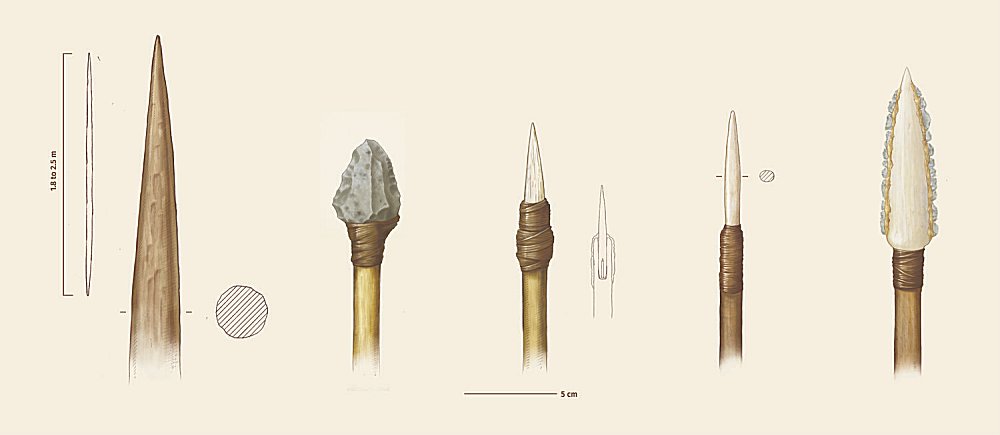Prehistoric Quarry, Stelida, Naxos: Early Human Moved Through Mediterranean Much Earlier
Conny Waters - AncientPages.com - Neanderthals and earlier humans inhabited Stelida, a prehistoric quarry on the northwest coast of Naxos, Greece at least 200,000 years ago - tens of thousands of years earlier than previously believed.
 Stelida, Naxos was first used at least 250,000 years ago (Lower Palaeolithic), with handaxes possibly made by Homo heidelbergensis.
Stelida, Naxos was first used at least 250,000 years ago (Lower Palaeolithic), with handaxes possibly made by Homo heidelbergensis.
New evidence delivered by an international research team led by scientists from McMaster University, is based on years of excavations and now it challenges current thinking about human movement in the region.
According to researchers, Stelida is the oldest site in the Cyclades, with scientific dates over 100,000 years old.
We have the earliest use of Naxian emery and the first proof of Cycladic Neanderthals!
Early Homo sapiens activity at Stelida suggests some modern humans entered Europe across the Aegean sea.
Stelida allows us to study the behavior of different human species in one place.
Here early Homo sapiens, Neanderthals and earlier humans used the local stone (chert) to make their tools and hunting weapons, of which the team has unearthed hundreds of thousands.
 Prehistoric hunting spears (L – R). (1) Lower Palaeolithic, wood; (2) Middle Palaeolithic, chert; (3) Upper Palaeolithic, bone; (4) Mesolithic, bone; (5) Mesolithic, bone and chert. Image: Stelida Naxos
Prehistoric hunting spears (L – R). (1) Lower Palaeolithic, wood; (2) Middle Palaeolithic, chert; (3) Upper Palaeolithic, bone; (4) Mesolithic, bone; (5) Mesolithic, bone and chert. Image: Stelida Naxos
It’s time to reconsider the routes our early ancestors took as they moved out of Africa into Europe and demonstrates their ability to adapt to new environmental challenges.
“Until recently, this part of the world was seen as irrelevant to early human studies, but the results force us to completely rethink the history of the Mediterranean islands,” an associate professor of anthropology at McMaster, Tristan Carter, who works with Dimitris Athanasoulis, head of archaeology at the Cycladic Ephorate of Antiquities within the Greek Ministry of Culture, said in a press release.
While Stone Age hunters are known to have been living in mainland Europe for more than 1 million years, the Mediterranean islands were previously believed to be settled only 9,000 years ago, by farmers, the idea being that only modern humans – Homo sapiens – were sophisticated enough to build naval vessels. Scholars had believed the Aegean Sea, separating western Anatolia (modern Turkey) from continental Greece, was therefore inaccessible to the Neanderthals and earlier hominins, with the only obvious route in and out of Europe, was across the land bridge of Thrace (southeast Balkans).
The new study suggests that the Aegean basin was, in fact, accessible much earlier than believed. At certain times of the Ice Age, the sea was much lower, exposing a land route between the continents that would have allowed early prehistoric populations to walk to Stelida, and an alternative migration route connecting Europe and Africa.
The area would have been attractive to early humans because of its abundance of raw materials ideal for its freshwater and toolmaking.
At the same time, however, “in entering this region the pre-Neanderthal populations would have been faced with a new and challenging environment, with different animals, plants and diseases, all requiring new adaptive strategies,” Carter said.
While present data suggests that the Aegean could be crossed by foot over 200,000 years ago, the researchers also raise the possibility that Neanderthals may also have fashioned crude seafaring boats capable of crossing short distances.
Located 3km south-west of Chora, Stelida is a geological rarity in the Aegean, being a 152m high hill made of chert. When broken, this stone provides a sharp and durable cutting edge, making it a desirable tool-making material before the introduction of metal-working 7,000 years ago.
Read More - Stelida Naxos Archaeological Project
Written by Conny Waters - AncientPages.com Staff Writer





















